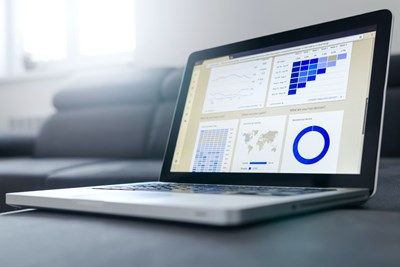In an era where data is hailed as the new currency of business, the ability to transform raw data into actionable insights is a superpower. Data visualization software is the magic wand that empowers organizations to do just that. It takes complex data sets and transforms them into visually appealing, easy-to-understand graphics, enabling users to uncover hidden patterns, trends, and insights at a speed that can be up to 10 times faster than traditional methods. Here, we'll explore the transformative power of data visualization software and how it can revolutionize decision-making in your organization.
The Data Deluge Challenge
Today's businesses are inundated with data from various sources: customer transactions, social media interactions, website analytics, supply chain data, and more. This abundance of raw data is both a goldmine and a challenge. Extracting meaningful insights from massive data sets can be a daunting and time-consuming task.
The Rise of Data Visualization
Data visualization is the art and science of representing data graphically. It goes beyond basic charts and graphs, using advanced techniques to translate complex data into visual stories. Here's how data visualization software is transforming the data landscape:
I. Simplifying Complexity
Data visualization software simplifies complex data by presenting it in an intuitive and digestible format. Charts, graphs, heatmaps, and interactive dashboards turn numbers into visual narratives, making it easier for users at all levels of an organization to grasp insights.
II. Speeding Up Insight Discovery
Traditional data analysis methods involve sifting through spreadsheets and tables, which can be time-consuming. Data visualization allows for near-instant recognition of trends and outliers, accelerating the insight discovery process.
III. Enhancing Data Exploration
Interactive data visualization tools empower users to explore data from multiple angles. With a few clicks, you can drill down into specific data points, apply filters, and adjust parameters to gain deeper insights and answer complex questions.
IV. Supporting Data-Driven Decision-Making
Data visualization tools enable data-driven decision-making. By presenting data in a compelling visual format, organizations can make informed choices, identify opportunities, and mitigate risks more effectively.
Types of Data Visualization Software
There's a wide range of data visualization software available, catering to diverse user needs and skill levels. Here are some popular options:
- Tableau: Known for its powerful visualization capabilities and user-friendly interface, Tableau offers a wide array of chart types and interactive features.
- Power BI: Microsoft's Power BI is a versatile tool that integrates seamlessly with other Microsoft products. It's suitable for both beginners and advanced users.
- QlikView/Qlik Sense: Qlik's tools offer associative data modeling, enabling users to explore data relationships intuitively.
- D3.js: For those with programming skills, D3.js is a JavaScript library that provides extensive customization options for creating unique data visualizations.
- Google Data Studio: This free tool is great for creating basic reports and dashboards, especially if you're already using Google Workspace.
Unlocking the Potential of Data Visualization
To harness the full potential of data visualization software, consider the following steps:
- Data Integration: Ensure that your software can connect to various data sources, allowing you to consolidate information from multiple systems.
- Training and Skill Development: Invest in training to empower your team with the skills needed to create and interpret data visualizations effectively.
- Collaboration: Foster a culture of collaboration by sharing interactive dashboards and reports with team members. Encourage data-driven discussions.
- Security and Data Governance: Implement robust security measures and data governance practices to protect sensitive information.
- Regular Updates: Keep your software up to date to benefit from the latest features and enhancements.
Data visualization software is a game-changer for organizations seeking to unlock the hidden potential within their data. By transforming raw data into stunning visuals and uncovering hidden insights up to 10 times faster, businesses gain a competitive edge. Embrace the power of data visualization to drive informed decision-making, enhance efficiency, and unearth valuable opportunities in the ever-expanding world of data. With the right tools and mindset, you can turn data into a strategic asset that propels your organization forward.



